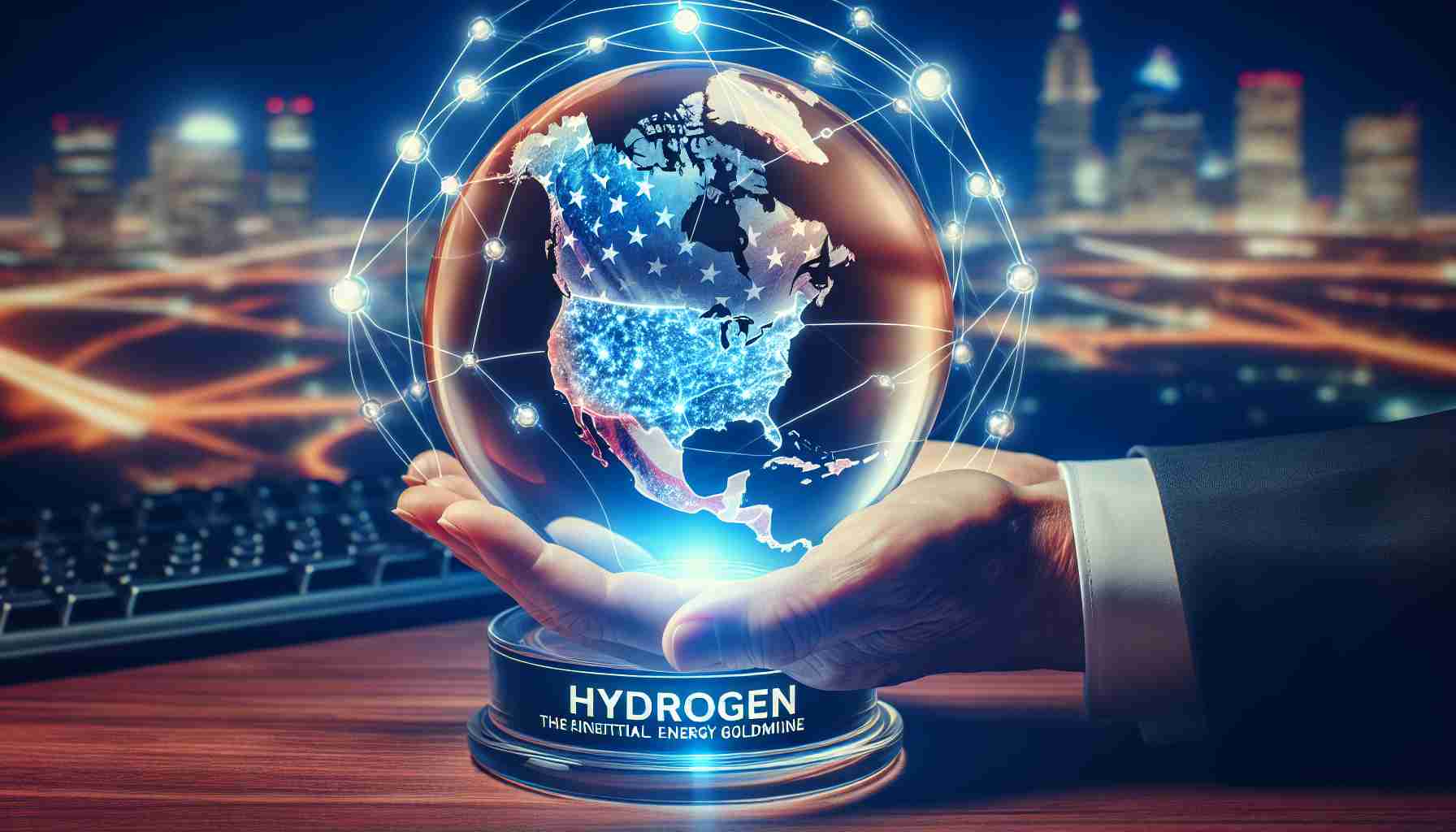Exploring Untapped Energy Resources
A pioneering map from the U.S. Geological Survey (USGS) has unveiled the potential of an untapped energy source in the form of geologic hydrogen. This revelation has dashed long-held assumptions about the scarcity of viable hydrogen reserves in the U.S.
While many believed that naturally occurring hydrogen was insufficient for energy production, the recent findings suggest otherwise. The USGS has meticulously categorized various regions off the U.S. coastlines and interior states, indicating which areas may host significant hydrogen reserves.
In a notable announcement, a USGS official expressed excitement over the discovery, remarking that certain localities in the U.S. could indeed possess a viable hydrogen resource beneath the Earth’s surface. Following a comprehensive geological survey, researchers estimate that approximately 6.2 trillion tons of hydrogen may lie untapped, with as little as 2% capable of providing carbon-free energy for two centuries.
The map divides the nation into regions with high and low potential for exploitable hydrogen resources. States such as Kansas, Iowa, and California’s coastal regions are highlighted as promising areas.
As interest in sustainable energy grows, experts predict that hydrogen could play an instrumental role in meeting future energy demands, possibly accounting for as much as 30% of energy supply in select sectors by 2050. With innovative methodologies paving the way, the USGS is poised to provide ongoing updates on this exciting energy frontier.
Unlocking the Future: The Broader Implications of Geologic Hydrogen
The identification of geologic hydrogen as a viable energy source marks a significant turning point in the pursuit of sustainable energy solutions. This new understanding not only reshapes our energy landscape but also carries profound implications for society, culture, and the global economy.
As nations grapple with the urgency of climate change, the potential of hydrogen empowers them to pivot towards a more sustainable energy model. Hydrogen, when produced sustainably, offers a carbon-neutral alternative that could facilitate the transition from fossil fuels, thus transforming energy infrastructures worldwide. This shift could drastically lower greenhouse gas emissions and enhance energy security for nations dependent on imported fuels, fostering greater geopolitical stability.
Moreover, the economic ramifications of harnessing this untapped resource are considerable. The emergence of a hydrogen economy could stimulate job creation in sectors ranging from geologic surveying to advanced manufacturing and distribution. According to industry analysts, the hydrogen sector could generate over 3 million jobs by 2030 in the U.S. alone, catalyzing economic growth in regions once reliant on traditional energy sources.
On the environmental front, the capability to produce carbon-free hydrogen could lead to significant progress in reducing air pollution and mitigating climate impacts. Additionally, as technological advancements continue to evolve, we anticipate a future characterized by innovative hydrogen applications, from transport solutions to energy storage, revolutionizing how we think about energy consumption.
In summary, the revelations surrounding geologic hydrogen do not merely reflect an untapped energy reservoir; they herald a paradigm shift towards a sustainable, economically vibrant, and environmentally responsible future.
Unlocking the Future: The Untapped Potential of Geologic Hydrogen
—
Introduction
Recent findings from the U.S. Geological Survey (USGS) have opened a new chapter in the exploration of hydrogen as a viable energy source. This breakthrough has shifted the perspective on hydrogen reserves in the United States, especially regarding naturally occurring geologic hydrogen.
Key Insights into Geologic Hydrogen
The USGS has produced a groundbreaking map that identifies regions with significant potential for hydrogen reserves, which could revolutionize energy production. This map delineates areas with high and low probabilities of exploitable hydrogen resources, specifically pinpointing states like Kansas, Iowa, and parts of California’s coast.
Estimated Hydrogen Reserves
Research indicates that around 6.2 trillion tons of hydrogen may remain untapped beneath the Earth’s surface, with an astonishing 2% of this total capable of generating carbon-free energy for approximately two centuries. This revelation dispels the myth of limited naturally occurring hydrogen reserves, presenting new opportunities for sustainable energy development.
The Role of Hydrogen in Future Energy Supply
As global interest in renewable energy escalates, hydrogen is increasingly recognized as a crucial component in meeting future energy demands. Experts predict that hydrogen could contribute to as much as 30% of the energy supply in critical sectors by 2050, driven by advancements in energy technologies and increased efficiency.
Pros and Cons of Utilizing Geologic Hydrogen
Pros:
– Sustainability: Geologic hydrogen can provide a clean energy source without greenhouse gas emissions.
– Abundance: The estimated 6.2 trillion tons of hydrogen indicates considerable potential for long-term energy supply.
– Energy Security: Harnessing domestic hydrogen reserves could reduce dependence on foreign oil.
Cons:
– Extraction Challenges: The technology and methods needed for extraction and utilization of geologic hydrogen are still under development.
– Economic Viability: The cost-effectiveness of hydrogen production compared to other renewable sources is a subject of ongoing research.
– Infrastructure Needs: Significant investments will be required to develop the infrastructure needed for hydrogen production, storage, and distribution.
Limitations of Geologic Hydrogen
Although the potential of geologic hydrogen is immense, there are challenges for its large-scale adoption. Comprehensive geological assessments and the development of efficient extraction technologies are critical steps that must be addressed. Furthermore, there are concerns regarding the impact of extraction processes on the environment that need careful evaluation.
Future Trends and Innovations
As we move toward a more sustainable energy landscape, the innovations in hydrogen production will likely become more refined. Emerging technologies such as advanced drilling methods and enhanced data analytics will help in identifying the best regions for hydrogen extraction. Moreover, collaboration between private enterprises and government agencies will be crucial for developing the necessary frameworks for integrating hydrogen into the energy market.
Conclusion
The USGS’s pioneering work in mapping geologic hydrogen reserves represents a significant step towards understanding and harnessing this untapped energy source. With the promise of sustainability and substantial reserves, hydrogen has the potential to reshape the future of energy in the United States. As research continues and technologies evolve, geologic hydrogen may become a cornerstone of the nation’s energy strategy.
For more information on energy resources, please visit USGS.














